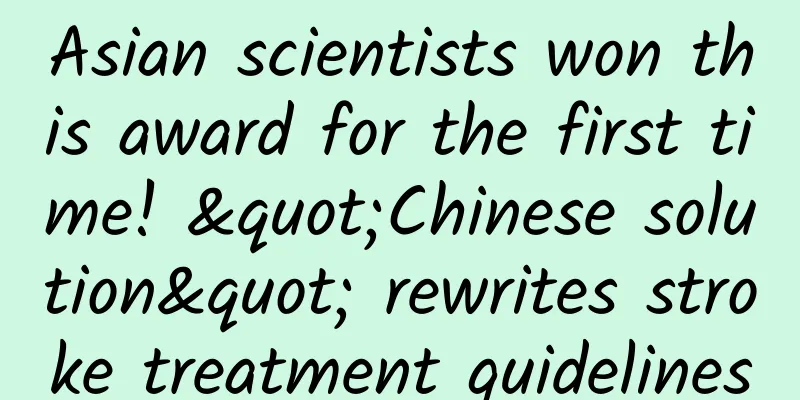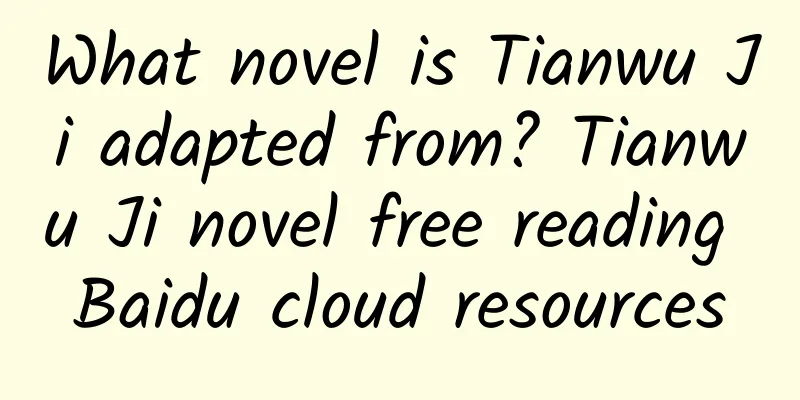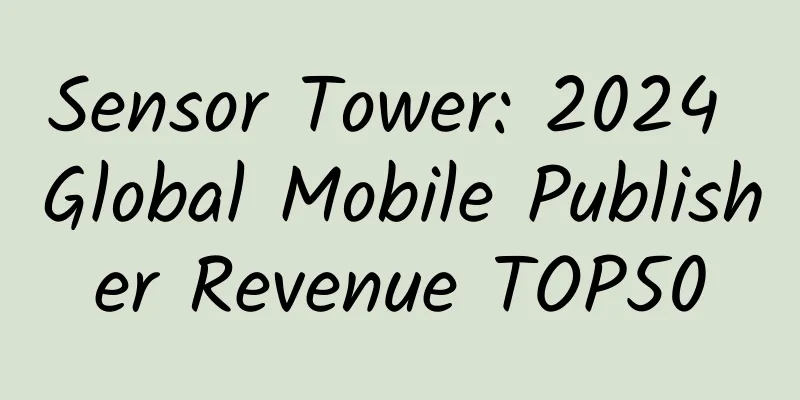Asian scientists won this award for the first time! "Chinese solution" rewrites stroke treatment guidelines

|
The 2025 International Stroke Conference opened in Los Angeles on the 5th. Wang Yongjun, president of Beijing Tiantan Hospital affiliated to Capital Medical University, was awarded the "William Feinberg Stroke Award" at the conference. This is the first time that an Asian scientist has won the award in the 34 years since the award was established. The award is considered an authoritative award in the field of international stroke clinical medicine. ▲Lauren Sansing, Chairman of the 2025 International Stroke Conference and President of the American Stroke Association, presents an award to Professor Wang Yongjun of Beijing Tiantan Hospital Innovative "Chinese Solution" Rewrites World Guidelines "The difference between humans and animals lies in the function of the brain. Human nature is the function of the brain. When a person gets a brain disease and loses the function of the brain, he loses his human nature." As a cerebrovascular disease expert with 40 years of medical experience, Wang Yongjun believes that "saving the brain is saving humanity." He is proud of his career and has always been committed to saving tens of millions of stroke patients. He hopes to find more and better ways for stroke patients to survive by constantly exploring the depths of the brain. ▲Wang Yongjun is focusing on analyzing the patient's cerebrovascular images In 2000, when 38-year-old Wang Yongjun took over as director of the Department of Neurology at Beijing Tiantan Hospital affiliated to Capital Medical University, he planned to build China's first "stroke unit". In just half a year, more than 2,000 stroke patients received treatment in the stroke unit. Compared with patients who received traditional treatment methods in the same period, the average mortality rate of patients in the stroke unit dropped by 20%, the disability rate dropped by 30%, and the average hospitalization time and medical expenses dropped by 15%. He did not stick to the rules and made bold breakthroughs. He spent a full eight months to design the "CHANCE" research plan and worked hard day and night for 1,460 days. After repeated verification, the " CHANCE" study broke the "dual-antibody" taboo that has plagued the clinical and research fields of stroke for decades. This "Chinese solution" can reduce the 90-day recurrence risk of high-risk non-disabling ischemic cerebrovascular disease patients by 32% without increasing the adverse reactions of bleeding, giving millions of patients the opportunity to "live well." The new CHANCE method has rewritten the clinical diagnosis and treatment guidelines for cerebrovascular diseases in China, the United States, Canada and other countries, becoming the highest international standard for the treatment of ischemic cerebrovascular disease. It has been written into the designated textbooks for the U.S. Medical Practitioner Examination and classic monographs on cerebrovascular diseases. Promoting the treatment of ischemic stroke into the "dual-antibody era" High recurrence is a global problem in the prevention and treatment of ischemic cerebrovascular diseases such as stroke. In the past, the main means to reduce recurrence internationally was antiplatelet therapy. However, although single-drug antiplatelet therapy can reduce the risk of recurrence and death from ischemic cerebrovascular disease, the recurrence rate within three months is still over 10%. "If the patient relapses more than three times, the survival rate of the patient is basically zero. Among the surviving patients, the disability rate is as high as 50%. Symptoms such as paralysis, aphasia, and blindness will seriously affect the patient's quality of life, and bring heavy economic and psychological burdens to the patient, his family, and society." Wang Yongjun said. What should we do if the effect of single-drug antiplatelet therapy is not ideal? Scientists have added another drug blocking pathway - proposing aspirin and clopidogrel dual-target combined antiplatelet drug therapy (dual antiplatelet therapy) to enhance the platelet efficacy through the synergistic effect of dual antiplatelet therapy, thereby reducing the risk of stroke recurrence. To verify this treatment theory, Germany and other countries conducted three large-scale international clinical trials for 20 years, but unfortunately they all failed. Dual antiplatelet therapy has even become a "forbidden zone" in the field of stroke research. "Adding new drugs will increase the patient's bleeding risk. How should doctors use the drugs?" In 2009, Wang Yongjun led the team to launch the "CHANCE Program", bravely stepping into this "forbidden zone": "A study on the efficacy of clopidogrel in high-risk groups for acute non-disabling cerebrovascular events" The English abbreviation of "CHANCE" is exactly "CHANCE", which is also the meaning of the Chinese word "opportunity". We hope to bring better survival chances to patients through this study. In February 2013, after solid research and scientific verification, Wang Yongjun, on behalf of 114 research centers in China, announced the clinical research results of the "Opportunity Program" to the world for the first time at the International Stroke Conference held in Hawaii: within 24 hours of onset, the combination of aspirin and clopidogrel for 21 days can reduce the 90-day recurrence risk of high-risk non-disabling cerebrovascular disease patients by 32%, without increasing bleeding side effects. "The 'Opportunity Plan' has reduced the recurrence rate of cerebrovascular disease patients from 11% to 8.2%, which means that in my country alone, 740,000 stroke patients can be saved each year, saving more than 10 billion yuan in medical expenses," Wang Yongjun recalled. "The report was finished on Chinese New Year's Eve. I was so excited that I ran to the beach alone. There was only one voice in my heart: We have taken this step!" The research results of "Opportunity Program 2" in 2021 were published in the New England Journal of Medicine, which once again caused a sensation in the international medical community: the risk of recurrence can be further reduced from 8.2% to 6%, which indicates that my country has already stepped into the forefront of the world in the field of precision medicine research on cerebrovascular diseases. Intravenous thrombolysis enters the "new era of reperfusion therapy" For patients with acute ischemic stroke, intravenous thrombolysis is the first choice for treatment. The traditional intravenous thrombolytic drug alteplase has a complex production process and limited production capacity, resulting in drug shortages that have become a global problem. Wang Yongjun and his team conducted clinical research and development on new thrombolytic drugs tenecteplase, reteplase, and pro-urokinase, confirming the effectiveness and safety of these three drugs in the treatment of stroke. At present, these three drugs, which are more convenient to use and cheaper, have been approved by drug regulatory authorities in China and Europe and the United States and are gradually being used in clinical practice. This breakthrough completely solves the problem of shortage of thrombolytic drugs for cerebrovascular disease and the "bottleneck" problem of thrombolytic drugs. It can also support China's contribution to more than 50% of the global thrombolytic drug production capacity and break the international monopoly of thrombolytic drugs in the field of stroke. For patients with acute ischemic stroke, "time is brain". For many years, the traditional intravenous thrombolysis time window has always been "locked" at 4.5 hours. Wang Yongjun and his team used imaging and artificial intelligence technologies to design and confirm for the first time in the world a new thrombolytic therapy program that expands the intravenous thrombolysis time window to 24 hours. This means that 90% of patients with acute ischemic stroke have the opportunity to receive thrombolytic therapy, which can reduce the patient's disability rate by 8.8% without increasing the risk of intracranial hemorrhage. This is also considered by the authoritative journal "New England Journal of Medicine" to have "far-reaching impact on global clinical practice." In the traditional acute stroke diagnosis and treatment model, the average time from when a patient enters the hospital to when they receive thrombolytic therapy is about 60 minutes. Wang Yongjun and his team integrated domestically produced low-field strength nuclear magnetic resonance, artificial intelligence systems, and a new generation of thrombolytic drugs and other technologies, highly organized each link of the traditional model, and innovatively designed the "emergency stroke unit," shortening this time to less than 20 minutes, thereby gaining treatment opportunities for more patients. This series of studies is also considered to have pushed intravenous thrombolysis for ischemic stroke into the "new reperfusion therapy era." As a leading figure in this field in China, Wang Yongjun pioneered a new paradigm of reverse transformation in the development of cerebrovascular disease drugs. By establishing a high-quality multi-omics and multimodal database set for stroke in the Chinese population, STROMICS, he screened out multiple targets related to ischemic cerebrovascular disease, obtained 13 related invention patents, and achieved the transformation from the traditional new drug development model of "knowledge-driven" to "data-driven", shortening the time from the discovery of new drug targets to the market launch of drugs from the traditional model of nearly 20 years to 3-7 years. Through a series of system construction, Wang Yongjun's team has effectively opened up the most blocked link in the transformation of basic research into clinical practice, and formed a replicable "Tiantan Model" of clinical research. "However, the story continues and our mission has not yet been fully completed," Wang Yongjun said. "We look forward to the results of more experiments." Source: Xinhua News Agency, China National Radio, Beijing Science and Technology News, Science and Technology Daily, Journal of Capital Medical University |
Recommend
My hands are dry and peeling. Do I have tinea manuum?
Reviewer: Zhang Shuyuan, Chief Physician, Beijing...
How effective is potassium permanganate in treating vulvar itching?
Vulvar itching is a very common symptom in women....
TechInsights: Asia Pacific smartphone market shipments to grow 8% year-on-year in Q1 2024
According to the latest report from research firm...
What are the characteristics of menopausal blood?
When women reach around fifty years old, they ent...
How to stop bleeding during menstruation
Prolonged menstruation is a problem that worries ...
Is the test paper dark and light? Is it pregnancy?
Female friends are not unfamiliar with early preg...
Ovulation test paper positive after transplantation
Once a woman has infertility, it will lead to fam...
Progesterone and hcg levels at 4 weeks of pregnancy
Pregnant women will go to the hospital for prenat...
What vitamin deficiency causes dry skin? Check it out now
In life, many women pay special attention to hydr...
What causes thick uterine membrane?
The uterine membrane is a very private part of wo...
Is it necessary for cats to use catnip? What should I do if my kittens don’t like catnip?
Catnip is a must-have for many cat-raising famili...
Are you still worried about acne?
More and more young people are worried about acne...
Can minimally invasive surgery be performed for ectopic pregnancy?
Ectopic pregnancy surgery is generally a relative...
Fun fact: Why does hair split?
Having beautiful hair is the dream of many girls,...
What is the reason why girls always sweat?
If you live in a relatively hot place for a long ...









